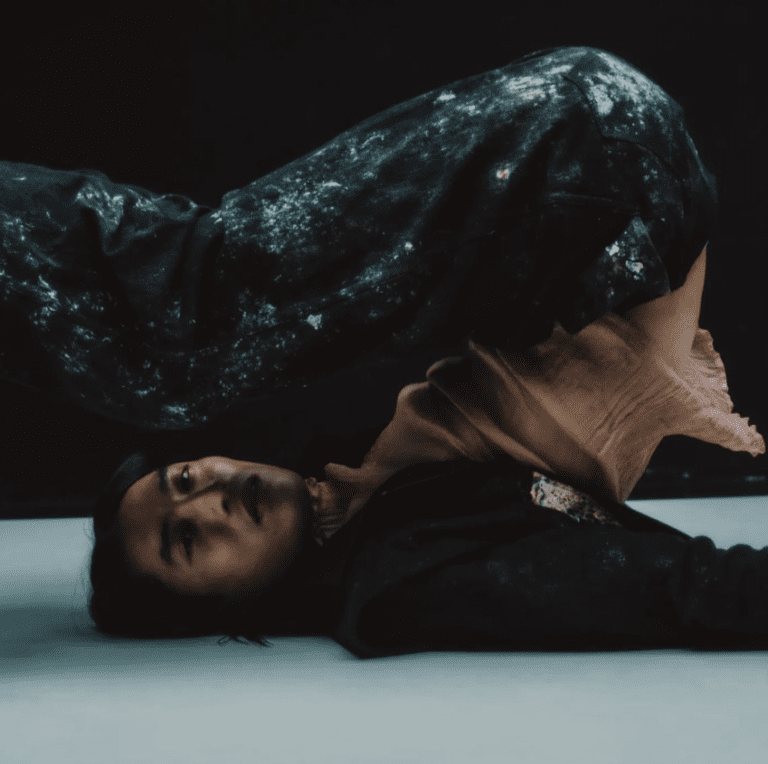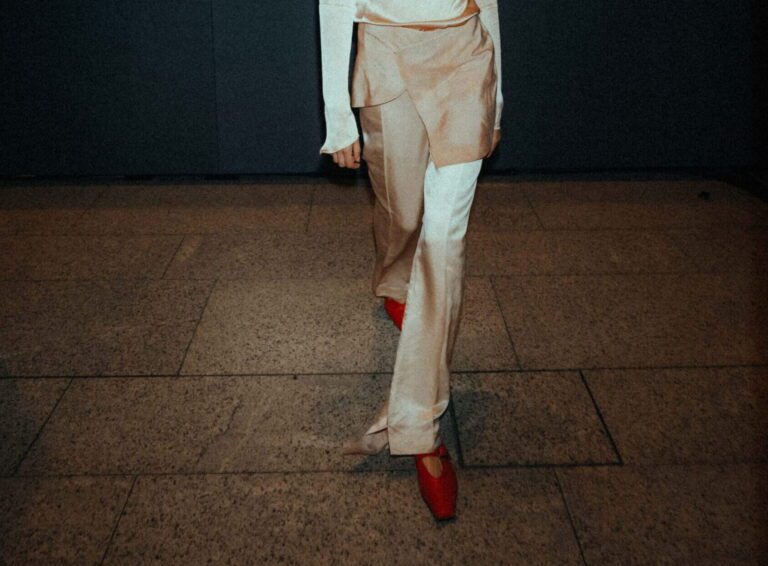Welcome to my Laboratory
Welcome to my experimental playground where innovative materials meet fashion. This space mirrors my bachelor thesis journey, offering an in-depth look into the fascinating world of biomaterials and sustainable textiles. Here, I push the boundaries of conventional fashion, exploring new possibilities that blend creativity with environmental responsibility.
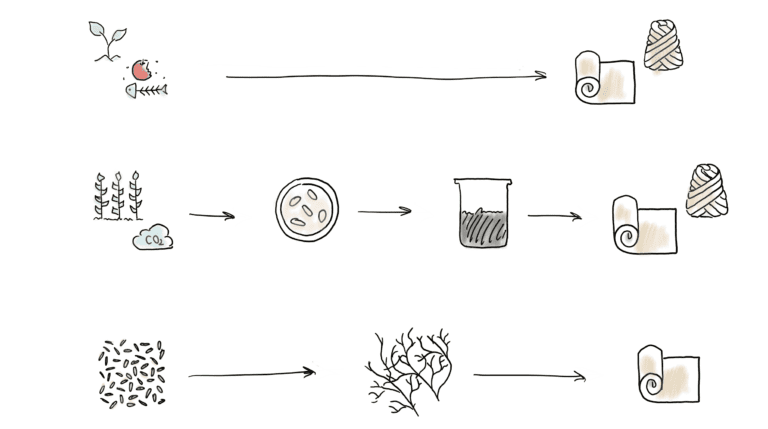
Introduction to Biomaterials

Biomaterials are revolutionising fashion, offering sustainable alternatives to traditional textiles. From mushroom leather to algae-based fabrics, these innovations are reshaping our understanding of clothing. In my research, I’ve discovered a vast array of biomaterials, each with unique properties and potential applications. What excites me most is their ability to mimic, and often surpass, conventional fabrics while significantly reducing environmental impact.
Molding the Future of Fashion
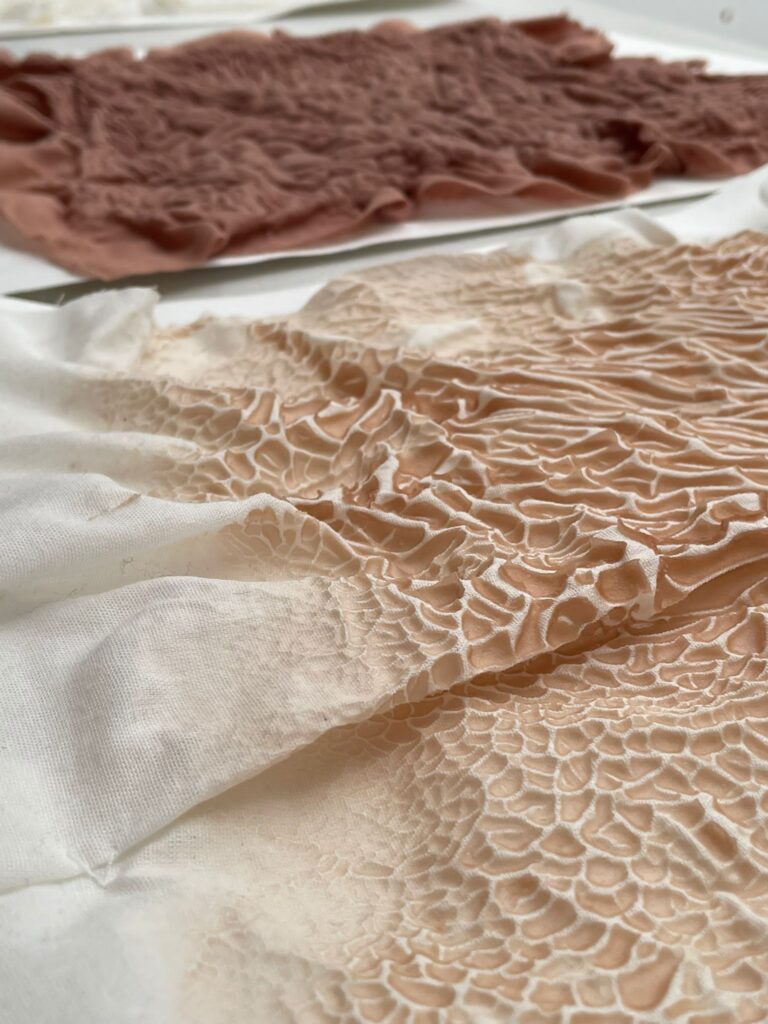
Bioplastics in Fashion

A SECOND SKIN FOR FASHION
The World of Mushroom
FUNGI Kingdom
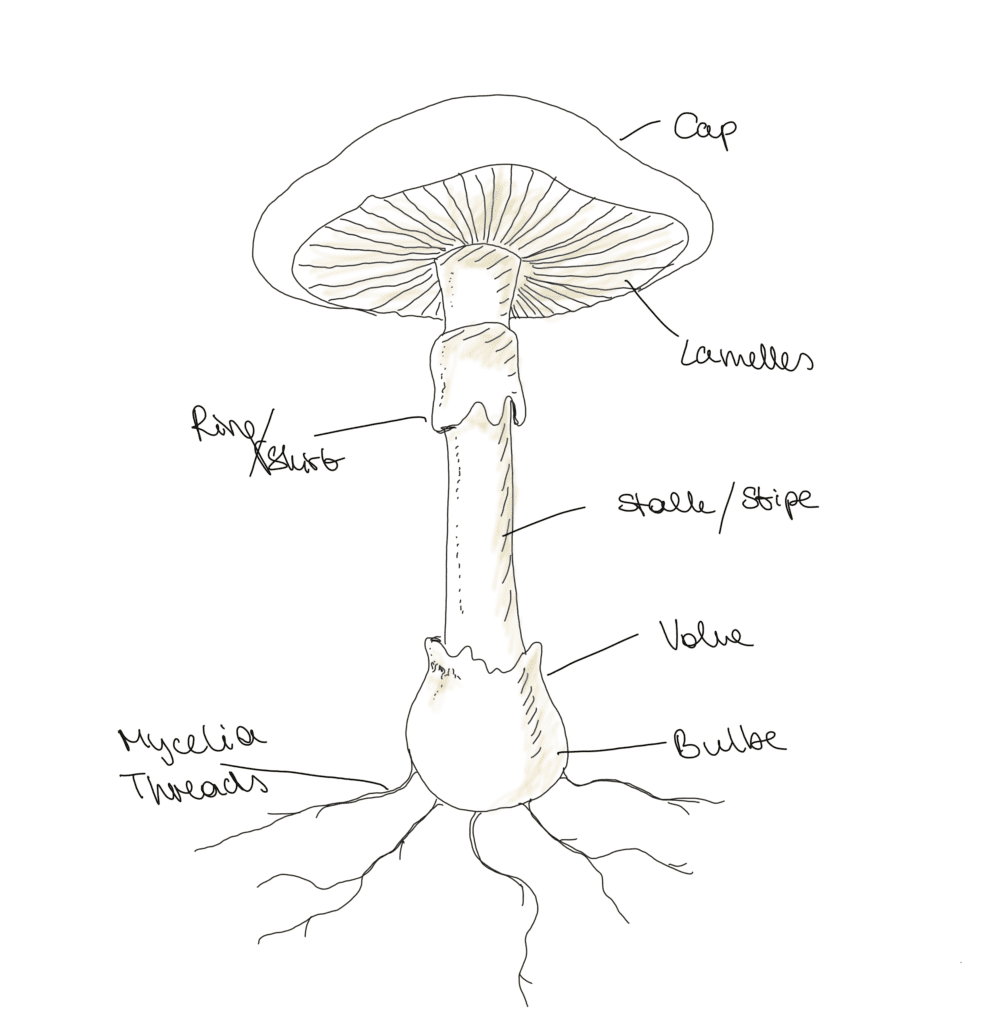
DYEING with Fungi

Mycelium Cultivation

I cultivate mycelium, the root structure of fungi, directly on textile surfaces to develop innovative materials. This process is as much an art as it is a science, requiring patience, precision, and a deep understanding of fungal biology. By carefully controlling growth conditions and selecting specific textile substrates, I’m able to create materials with varying textures, strengths, and aesthetic qualities. This method allows me to forge unique bonds between textile and fungus, resulting in creations that are both functional and visually captivating.
Pioneering Novel Materials
Cooperation with the university of Vienna
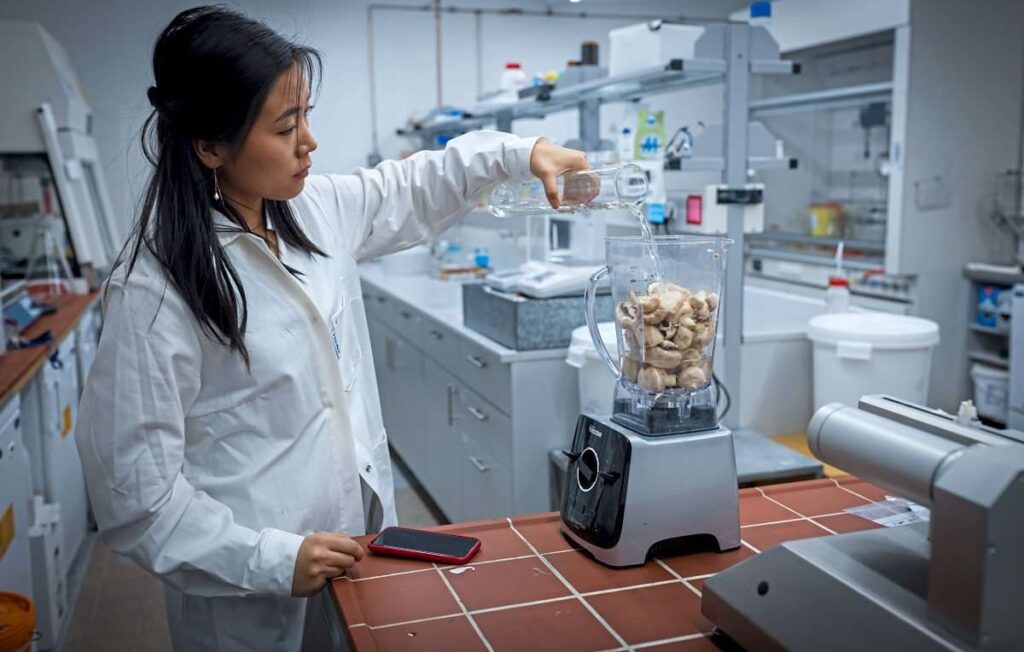

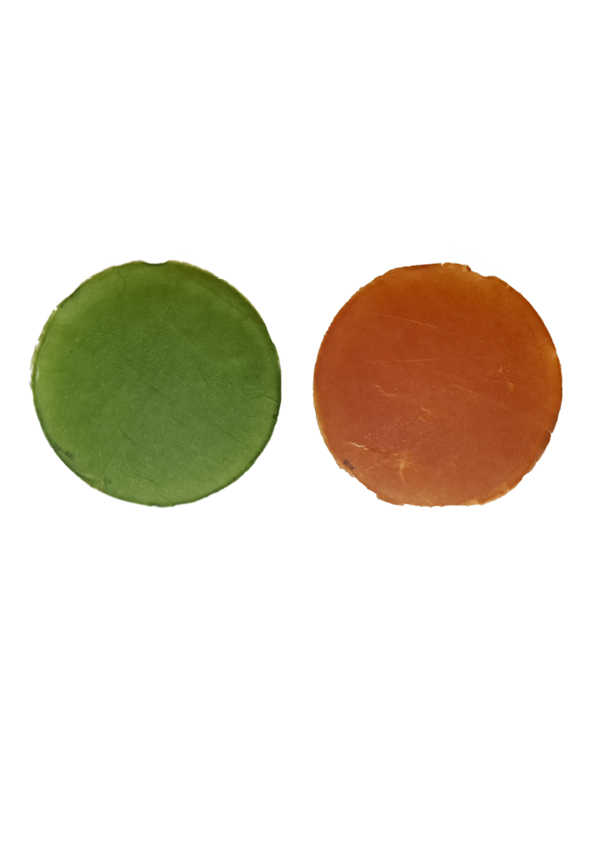
Mushrom Material

First Design with the Material
MYcelium interwoven
“Mycelium Interwoven” represents the culmination of my research and experimentation, a collection that seamlessly blends the organic structures of fungi with contemporary fashion design. This line not only showcases the aesthetic potential of mycelium-based materials but also serves as a testament to the possibility of a more sustainable future in fashion.
My Vision of Fashion
My work with biomaterials is driven by a deep commitment to sustainability. I believe in rethinking the entire lifecycle of a garment, from sourcing raw materials to considering its end-of-life impact. In my practice, I strive to implement circular design principles, creating garments that are not only made from sustainable materials but are also designed for easy recycling or biodegradation. This approach could fundamentally change our relationship with clothing and significantly reduce the fashion industry’s environmental footprint.
Are you inspired by the potential of fungal-based fashion? Would you like to be part of this sustainable revolution? I invite you to experience these innovative materials firsthand. Book a personalized design consultation with me, and together we can create a bespoke piece that not only fits your style but also aligns with your values for a more sustainable future.
























